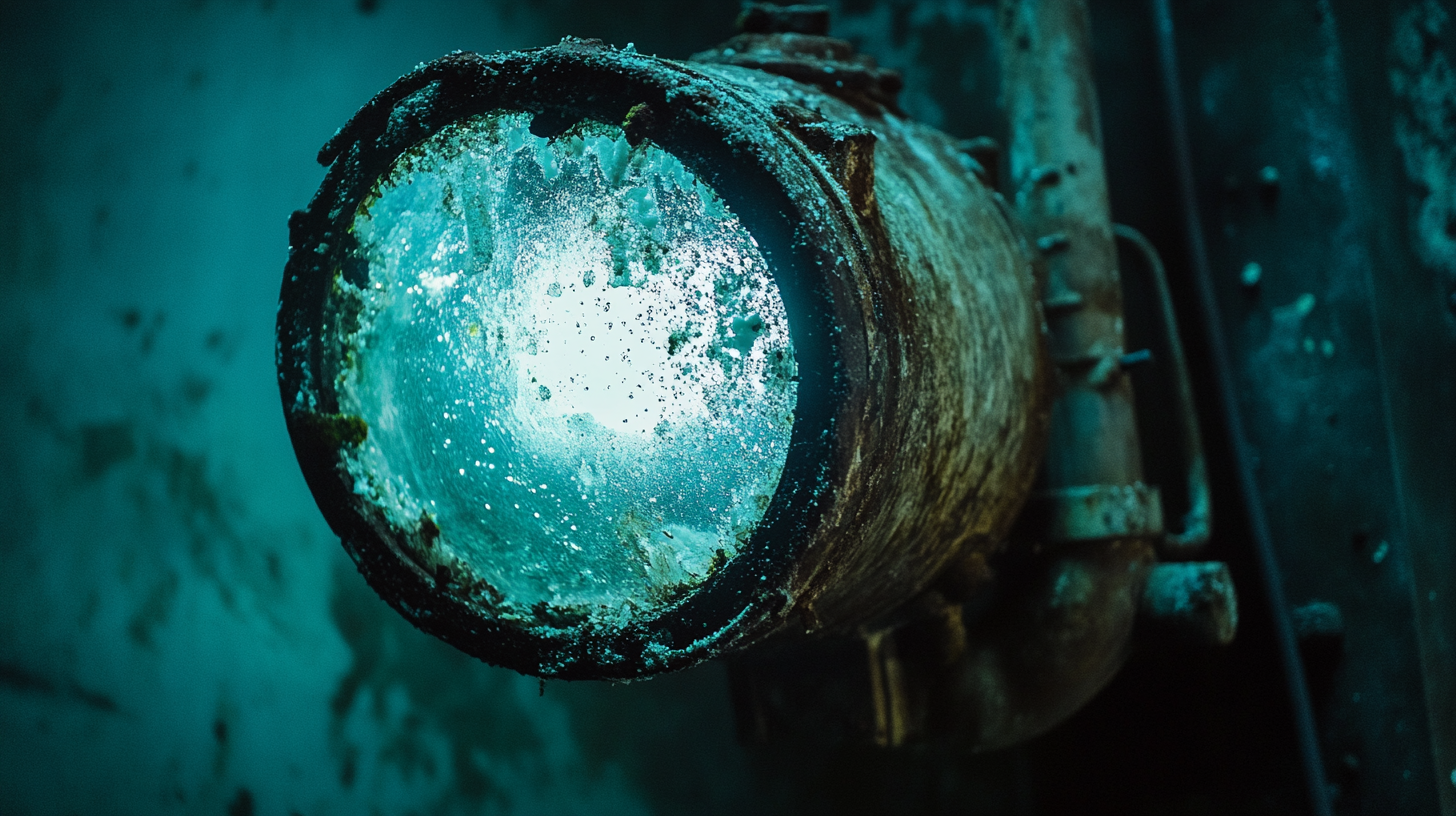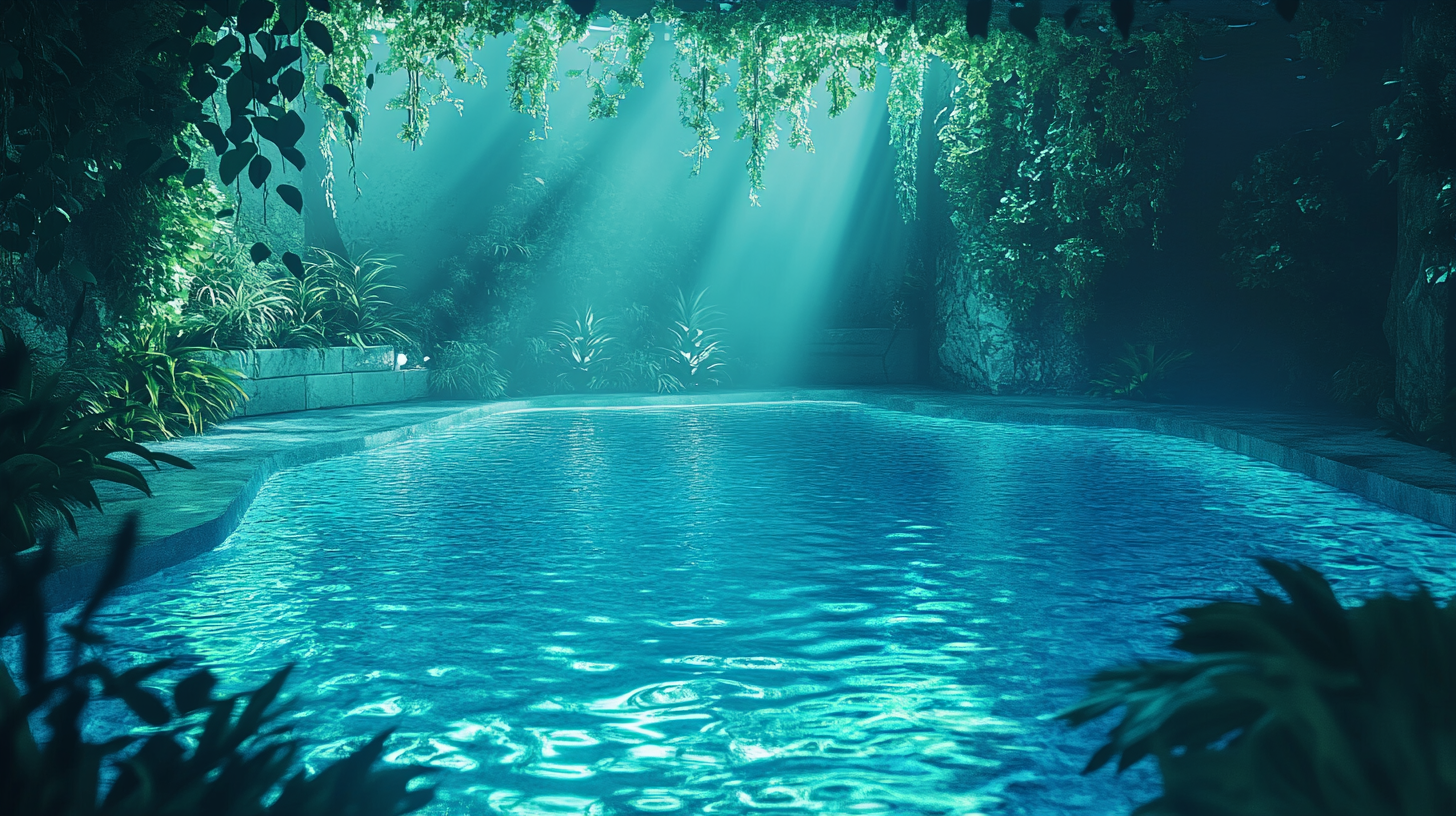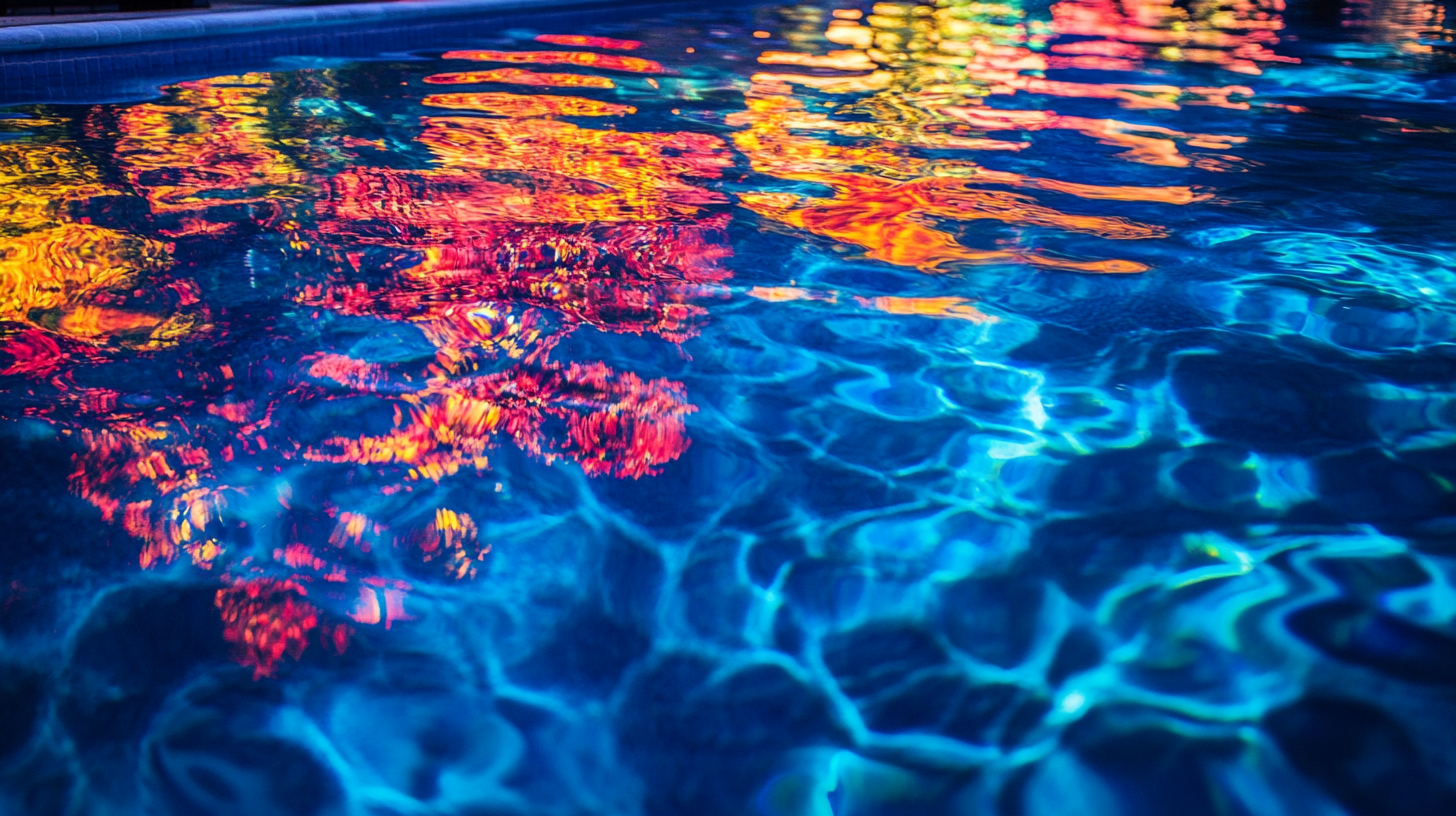How to protect your underwater boat lights from corrosion
When it comes to maintaining your underwater lights, understanding what causes corrosion is the first step toward extending their lifespan. Corrosion is essentially the degradation of the metal components of your lights, primarily due to constant exposure to saltwater. The salty marine environment is highly corrosive, and it can quickly deteriorate metal parts if they aren’t properly protected. Key factors contributing to this include the amount of time your boat spends in the water, the salinity of the water, and the materials used in the construction of your light fixtures.
Electrolysis also plays a significant role in underwater light corrosion. Electrolysis occurs when different metals in your underwater lights are exposed to seawater, creating a weak electrical current that accelerates the breakdown of the metal. This phenomenon is more common when your boat’s electrical system isn’t properly grounded or if multiple dissimilar metals are in close proximity. By knowing these causes, you can take proactive steps and choose effective corrosion protection strategies as part of your regular boat maintenance routine, ensuring your underwater lights remain functional and bright over time.
Selecting corrosion-resistant materials
Once you understand what causes corrosion, the next step is to select materials that will stand up to the harshest environments, ensuring your underwater lights have the best chance at a long, trouble-free life. To begin with, materials like marine-grade stainless steel are the gold standard in corrosion-resistant options. This high-quality alloy is specifically designed to resist rust and corrosion, even when exposed to the relentless saltwater found in ocean environments. When selecting your underwater lights, ensure that the housing and any metallic components are made from this type of stainless steel. It might cost a bit more upfront, but the peace of mind it offers is well worth the investment.
Another excellent option to consider is bronze. This metal has been used for centuries in marine applications and is particularly resistant to seawater corrosion. Bronze develops a natural patina over time, which not only adds character to your boat but also acts as an additional protective layer against the elements. Some underwater lights incorporate bronze components for precisely this reason, making them a solid choice for those looking for long-term corrosion protection. However, if you prefer something with a more modern look, anodized aluminum could be your answer. Anodizing forms a tough, protective oxide layer on the aluminum surface, adding a layer of durability without compromising on aesthetics.
It’s also worth noting that not all materials are created equal when it comes to underwater applications. For instance, plain steel or low-quality aluminum won’t hold up nearly as well in seawater conditions and may become liabilities rather than assets. Such materials will likely lead to faster corrosion and eventual failure of your valuable underwater lights, leading to higher boat maintenance costs down the line. Therefore, it’s important to carefully review the materials used in the manufacturing of your underwater lighting systems, paying close attention to what each component is made of.
Finally, if your concerned about electrolysis—particularly if your boat’s electrical system isn’t 100% dialed in—you might want to consider lights that utilize advanced composite housings. These materials are non-conductive and won’t contribute to galvanic corrosion. They’re often designed with strength and durability in mind, making them a viable, lightweight option that’s immune to the corrosive effects of saltwater.
By thoughtfully choosing materials that are inherently resistant to corrosion, you’re taking a significant step towards ensuring your underwater lights will shine brightly for many boating trips to come, and reducing wear and tear on your wallet. As any knowledgeable boat owner will tell you, the best boating tips always center around prevention, and choosing the right materials is key to effective corrosion protection.
Regular cleaning and maintenance routines
Just like the rest of your boat, underwater lights require regular cleaning and maintenance to stay in peak condition over the long haul. After all, even the most corrosion-resistant materials can start to deteriorate if they’re not properly cared for. To maximize the lifespan of your lights, it’s crucial to incorporate a consistent cleaning regimen into your overall boat maintenance routine. When performed regularly, these simple yet effective tasks will go a long way in safeguarding your underwater lights from the relentless assault of saltwater and marine growth.
To begin with, rinsing your underwater lights with fresh water after every outing should be non-negotiable. Salt from seawater can start the corrosion process almost immediately once your boat is out of the water. By hosing down the lights with fresh water, you’ll wash away both salt and any accumulated marine debris that could potentially cause damage. Make sure to gently scrub the surface with a soft brush to remove any stuck-on particles, being careful not to scratch or damage the lens or housing.
In addition to rinsing, it’s a smart move to give your lights a more thorough cleaning at regular intervals. For this, use a gentle, marine-approved cleaner designed specifically for underwater lighting systems. These cleaners are formulated to break down the tough marine growth without harming the materials of the lights. Focus especially on barnacles, algae, and other biofouling that can latch onto the surface. If left unchecked, these organisms not only block out light but can also retain moisture that accelerates corrosion.
Beyond just cleaning, it’s also important to inspect all the connections and seals regularly. The wiring and electrical connections that power your underwater lights should be checked for any signs of wear, corrosion, or fraying. Loose connections can allow water to penetrate, leading to shorts or other electrical issues that might compromise the lights’ functionality. It’s also vital to ensure that seals and O-rings are intact and functioning properly; these components are your first line of defense against water intrusion that can turn a perfectly functional light into a corroded mess.
Another useful boating tip is to periodically remove the lights from their housing for a more comprehensive checkup. This gives you the opportunity to inspect the backside of the lights and their mounting brackets, areas that are often out of sight and hence out of mind. Any signs of corrosion in these spots should be addressed immediately to prevent more extensive, costly damage in the future. While the lights are removed, you can also reapply any lubricants or anti-corrosion treatments to any moving parts, ensuring smoother operation.
Don’t neglect the environment immediately surrounding your lights. Ensuring that your boat’s hull is clean and free from excessive marine growth can minimize the amount of debris that may eventually settle on your lights. In some cases, a boat’s antifouling paint can extend to the area around the lights to help ward off barnacles and other unwanted visitors. By keeping both the lights and their installations pristine, you’re significantly enhancing your boat’s overall aesthetic while also fortifying your corrosion protection strategy.
Using protective coatings and barriers
Protective coatings and barriers play a crucial role in enhancing the longevity of underwater lights by creating an additional line of defense against corrosion. These specialized coatings, when properly applied, can significantly reduce the corrosive effects that saltwater and other environmental factors have on your boat’s lighting systems.
One of the most common and effective types of protective coatings is anti-corrosion paint, specially formulated for marine environments. This type of paint contains inhibitors that react with corrosive elements like salt, preventing them from reaching the metal surfaces of your underwater lights. When selecting an anti-corrosion paint, be sure to choose one that’s designed for the specific materials of your light fixtures, whether they are made of stainless steel, bronze, or anodized aluminum. Applying a proper layer of this paint can make a noticeable difference in the longevity of your lights, minimizing the frequency with which they need to be maintained or replaced.
Another recommended approach is to use a high-quality, marine-grade sealant around the lights’ housing and mounting brackets. This sealant serves as a physical barrier, ensuring that seawater, moisture, and other harmful substances can’t easily penetrate and make contact with the metal components. It also helps in securing the seals and O-rings, preventing water intrusion that could lead to corrosion internally. Frequent reapplication, especially after removing and inspecting the lights, will help keep the protective barrier intact.
For those looking for an added layer of security, consider using dielectric grease on electrical connections and terminals. This special lubricant prevents moisture from reaching the metal parts by repelling water and also acts as a shield against corrosion. Besides, the grease can enhance the conductivity of the electrical connections, ensuring that your underwater lights function optimally under various conditions. Make sure to apply it generously but avoid overuse, as it can attract dirt and grease over time.
Electroplating is another advanced method often employed to protect underwater light components. By coating the metal parts with a different metal, usually one that’s highly resistant to corrosion like zinc or chromium, electroplating provides an additional shield against electrolysis and the corrosive effects of seawater. Lights treated with electroplating are often more costly upfront, but they offer excellent corrosion protection, making them a worthwhile investment in the long run.
For an even more advanced defense mechanism, you may want to explore the use of specialized coatings such as ceramic or nano-coatings. These coatings bond on a microscopic level with the surface of your underwater lights, forming an ultra-thin, highly durable layer that’s nearly impervious to corrosion. The benefits of nano-coatings extend beyond just rust protection; they can also provide resistance against scratches, impacts, and UV damage, ensuring that your lights remain in near-new condition for an extended period.
Finally, sacrificial anodes are another effective way to protect your underwater lights from corrosion. These anodes, typically made of zinc, magnesium, or aluminum, are installed near the underwater lights, where they absorb the corrosive effects of saltwater, sparing the lights themselves. Over time, the sacrificial anodes will degrade rather than the critical components of your boat lighting, meaning they must be inspected and replaced as part of your regular boat maintenance routine.
Incorporating protective coatings and barriers as part of your boating tips for maritime upkeep is more than just a smart move—it’s a necessity for those serious about maintaining their equipment’s longevity. By synergizing these methods, you can fortify your underwater lights against even the harshest marine conditions, extending their lifespan and keeping them functioning at their brightest for many adventures to come.
Monitoring and replacing lights as needed
Consistent monitoring is essential in keeping your underwater lights in optimal condition and safeguarding them against the relentless effects of corrosion. While it may be tempting to just install them and forget about it, regular checks are a crucial part of any comprehensive boat maintenance strategy. Underwater lights are constantly exposed to harsh conditions, from salty seawater to underwater currents, that inevitably take their toll over time. If left unmonitored, these conditions can lead to compromised lights that fail you when you need them most—sometimes in scenarios where visibility on the water is paramount for safety.
The key to effective corrosion protection is catching issues early before they escalate into costly repairs or total replacements. Make it a habit to frequently inspect your underwater lights for signs of wear and tear, such as rust spots, discoloration, or any performance irregularities like flickering. Another clear indicator of potential problems is a significant decrease in brightness; if your lights are no longer shining as vibrantly as they should, it’s time to take a closer look. These symptoms are often the first signals that corrosion might be starting to take hold, giving you the chance to address the problem before it worsens.
When inspecting your lights, don’t just focus on the visible parts. Unmount the lighting fixtures to check hidden components, especially the mounting brackets and rear sections, which can be hotspots for corrosion. These areas are often overlooked since they aren’t in direct sight but can suffer the most corrosive damage due to trapped moisture and lack of ventilation. Revisiting these parts occasionally to clean, lubricate, and ensure they are in good condition is one of the most vital boating tips for anyone serious about maintaining their equipment.
Another important aspect of monitoring is checking the electrical connections and seals. Ensure that all wires are intact and that the connections are not frayed or corroded. Corroded terminals can lead to a short circuit, potentially damaging the entire lighting system and reducing the lifespan of your underwater lights. Wiring problems can also mean that your lights are not getting enough power, leading to dimming or flickering. Replacing corroded or damaged components immediately can prevent a minor issue from turning into a major, wallet-draining problem.
Boating in different conditions will also have varying impacts on your lights. For example, if you frequently boat in waters with a high salt content, you may need to replace your bulbs more frequently than someone who uses their boat in a freshwater lake. Keeping track of these variables will help you establish a maintenance and replacement schedule that’s appropriate for your specific type of use. Having spare bulbs or entire replacement light fixtures onboard is a proactive measure that ensures you’re never left in the dark—literally—during your adventures.
Generally, the lifespan of an underwater light bulb or fixture will vary depending on the quality and technology used. LED lights, for example, can last up to 50,000 hours, but even these will eventually need replacing. As part of your routine checks, pay close attention to the light output, and if it becomes noticeably weak, don’t wait for the light to fail entirely before replacing it. When swapping out your lights, it might be worth considering upgrading to more corrosion-resistant models or even investing in lights with advanced protective features like integrated heat sinks, which can dissipate heat and prolong the lifespan of the fixture.
Remember that no matter how well you care for your lights, they will eventually need replacing as part of the natural wear and tear of boating. When it’s time, don’t think of it as an inconvenience, but rather as an opportunity to upgrade to newer, more efficient, and better-protected options. Replacing your lights when needed ensures that you maintain optimal performance, safety, and aesthetic appeal on your boat—keeping your vessel not just functional, but also as striking as the day you first took it onto the water.


